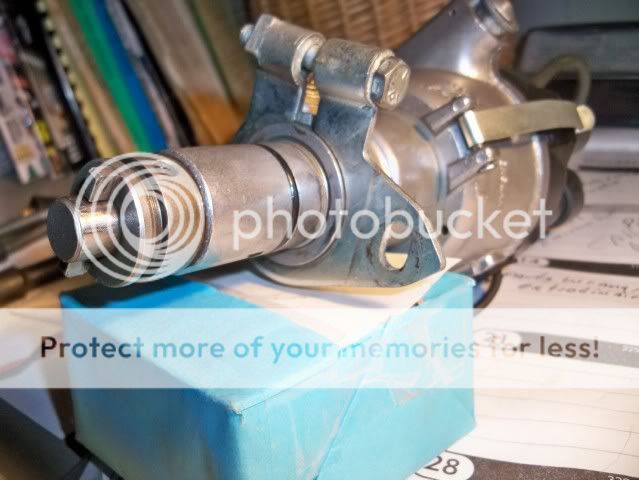M
Member 10617
Guest
Guest
Offline
I posted a few days ago that I had pulled my distributor in order to look for the small screw that holds the condenser to the plate but which, somehow, had worked its way loose and fallen out. I pulled the distributor, shook it, turned in every which way, looked under the plate, but never found the missing screw. This is a real mystery.
I reinstalled the distributor. Everyone who had advised me on this process said that the dog at the bottom of the shaft is offset and therefore the distributor can go in only one way -- the correct way.
But I've just read the following in the Haynes manual: "Note the position of the slot in the rotor arm drive in relation to the offset drive dog at the opposite end of the distributor. It is essential that this is reassembled correctly as otherwise the timing may be 180 degrees out."
If the offset prevents the distributor from being installed improperly, I don't understand the Haynes warning.
Can someone explain it?
NOTE: I did not remove the cam spindle, so as far as I can tell, I didn't disturb the slot in the rotor arm drive. Can I assume that this is what Haynes is talking about???
I reinstalled the distributor. Everyone who had advised me on this process said that the dog at the bottom of the shaft is offset and therefore the distributor can go in only one way -- the correct way.
But I've just read the following in the Haynes manual: "Note the position of the slot in the rotor arm drive in relation to the offset drive dog at the opposite end of the distributor. It is essential that this is reassembled correctly as otherwise the timing may be 180 degrees out."
If the offset prevents the distributor from being installed improperly, I don't understand the Haynes warning.
Can someone explain it?
NOTE: I did not remove the cam spindle, so as far as I can tell, I didn't disturb the slot in the rotor arm drive. Can I assume that this is what Haynes is talking about???

 Hi Guest!
Hi Guest!

 smilie in place of the real @
smilie in place of the real @
 Pretty Please - add it to our Events forum(s) and add to the calendar! >>
Pretty Please - add it to our Events forum(s) and add to the calendar! >> 



